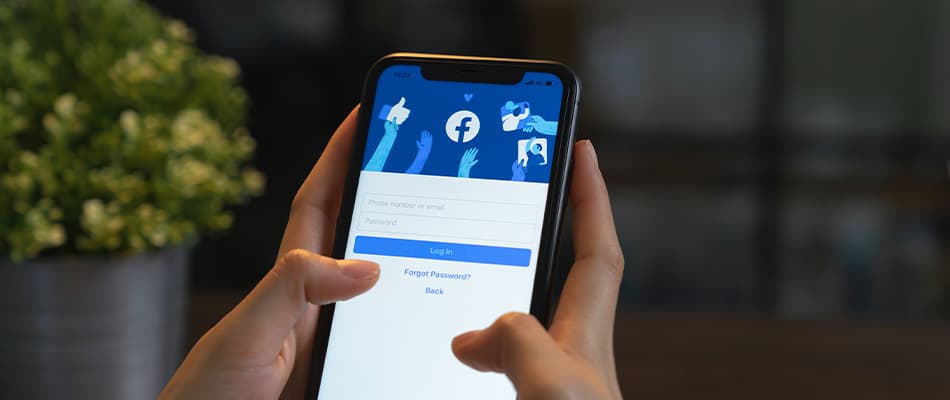Graphic Design vs Digital Marketing – Key Differences & Applications
Graphic design and digital marketing are both important in the modern work environment, but they serve different purposes. Graphic design focuses on creating attractive visuals that represent a brand and communicate ideas clearly. Digital marketing, on the other hand, is about promoting products or services online to reach more people. While graphic design creates the visuals, digital marketing makes sure they reach the right audience through the right platforms. Understanding what is graphic design vs digital marketing helps students and professionals see how both areas work together to create successful campaigns.
This article will explain the key differences between graphic design and digital marketing and how they support each other in building strong brands.
Table of Contents
Difference Between Graphic Design vs Digital Marketing
Graphic design vs digital marketing involves two key aspects of business. Graphic design focuses on creating visually appealing content such as logos and images that grab attention. On the other hand, digital marketing is about using platforms like social media and online ads to promote products or services to the right audience. Together, they help build strong brands and support business growth. Understanding their differences helps businesses use both effectively.
Below is the table showcasing the differences between graphic design and digital marketing:
|
Aspect |
Graphic Design |
Digital Marketing |
|
Definition |
Graphic design is the process of creating visual content to communicate messages or ideas. |
Digital marketing involves promoting products and services through online channels to reach and engage customers. |
|
Focus |
It emphasises visual aesthetics and effective communication of ideas. |
It focuses on strategy, audience engagement, and driving sales. |
|
Purpose |
Its purpose is to attract attention and convey information through visuals. |
Its purpose is to increase brand awareness, generate leads, and drive conversions. |
|
Target Audience |
It focuses on a specific audience’s visual preferences. |
It aims to reach a broader audience, using data to target specific demographics. |
|
Skills Required |
Creativity, typography, layout design, colour theory, and branding. |
SEO, content marketing, social media management, analytics, and campaign strategy. |
|
Tools Used |
Adobe Photoshop, Illustrator, InDesign, Canva, and Figma. |
Google Analytics, Mailchimp, Hootsuite, SEMrush, and Facebook Ads Manager. |
|
Output |
Used to produce logos, brochures, websites, advertisements, and other visual assets. |
Used to create social media posts, email campaigns, blog content, and PPC ads. |
|
Measurement of Success |
In this, success is measured by aesthetic appeal, brand recognition, and user feedback. |
In this, success is measured by metrics like traffic, conversion rates, and ROI. |
|
Collaboration |
It works closely with marketers and content creators for cohesive branding. |
It collaborates with designers to ensure visuals align with marketing messages. |
|
Approach |
Its approach is primarily creative and artistic, focusing on the visual aspect. |
Its approach is analytical and strategic, emphasising data-driven decision-making. |
The table above highlights the graphic design vs digital marketing aspects.
What is Graphic Design?
Graphic design is an approach that focuses on creating visual content to communicate messages clearly. It uses elements such as colours, typography, and images to represent ideas and brands. From logos to websites, graphic design shapes how information is presented, helping businesses build their identity and connect with audiences successfully.
- Definition
Graphic design is the art of putting together images and words to share ideas and messages. It is everywhere in our daily lives. For example, graphic design creates fun logos and posters for shops, helping them attract customers. It also makes textbooks clearer and more interesting to read. By using colour, pictures, and layouts, graphic design helps people understand information better. In short, graphic design makes things look good and easy to read, whether in ads or school materials.
- Techniques
Graphic design uses various methods to create clear and eye-catching visuals. These techniques help designers share their ideas in a way that is both creative and easy to understand. Understanding these techniques is essential when comparing graphic design vs digital marketing, as both fields use visuals to communicate and engage with audiences effectively.
Here are some simple techniques used in graphic design:
- Typography – This involves choosing and arranging fonts to make text clear and visually appealing. Good typography makes reading easier and more engaging.
- Colour Theory – This focuses on how colours work together to create the right mood or grab attention. Choosing the right colours makes a design stand out.
- Layout – This is about organising images and text in a balanced way. A well-planned layout helps people quickly understand the message.
- Visual Hierarchy – This technique highlights the most important parts of a design by using size, colour, or positioning, guiding the viewer’s eye.
- Tools and Technologies
Graphic design has grown with the help of digital tools and technology, making it simpler and faster to create eye-catching visuals. These tools help designers turn their ideas into reality, whether it’s for social media posts, logos, or websites. Learning these tools is important for anyone who wants to work in graphic design. Knowing graphic design vs digital marketing can also be helpful, as both fields collaborate frequently but serve different roles.
Below are the tools and technologies used for graphic design:
- Canva – It is a simple platform that helps you create designs easily. It has lots of templates, fonts, and images. You can use it to make things like social media posts, business cards, and more, whether you’re new to design or a professional.
- ChatGPT – ChatGPT is a text-based AI that helps designers by giving creative ideas, design tips, or even writing text for their graphics.
- Hootsuite – It helps designers manage social media. It lets you plan, schedule, and post graphics on different platforms to keep branding consistent.
- Lumen5 – It turns written text into videos, making it a great tool for designers who need to create video content for marketing or education.
- Suno – It is an image editing tool. It has filters, effects, and other features to help make photos and designs look polished and professional.
- DALL·E – It is an AI tool that creates images based on text descriptions. It helps designers quickly come up with ideas or create visual content.
- Traackrr – It helps designers keep track of projects, deadlines, and changes, making sure their work stays organised and on time.
- Applications
Graphic design is used in many areas to create visual content that communicates messages. It helps make ideas clear, interesting, and easy to understand. Here are four simple applications where graphic design is used:
- Advertising and Marketing – Graphic design is essential in creating banners, posters, social media ads, and promotional materials for attracting customers.
- Branding – It plays a major role in building brand identity through logos, packaging, and other visual elements that reflect a company’s image.
- Web Design – Graphic design helps make websites appealing and user-friendly, ensuring an engaging online experience.
- Publishing – Designers create layouts for books, magazines, and other publications to make content clear and attractive.
Learn How to Become a Graphic Designer in South Africa Here.
What is Digital Marketing?
Digital marketing is a way to promote products or services online. It uses different platforms like websites, social media, email, and apps to reach people. This approach includes strategies like pay-per-click (PPC) ads and search engine optimisation (SEO) to get more visibility. The main goal is to build brand awareness, connect with customers, and help businesses grow. Digital marketing also lets companies check how well their ads are doing and make changes to improve results.
- Definition
Digital marketing is a way to promote products and services using the internet. It includes various online tools like websites, social media, emails, and search engines. The goal is to connect with customers where they spend their time online, increase brand visibility, and encourage people to buy. With digital marketing, businesses can reach a larger audience and see how well their marketing efforts are working.
- Techniques
Digital marketing uses different techniques to help businesses succeed online. These methods connect companies with customers and boost their marketing efforts. Here are some popular techniques in digital marketing:
- Search Engine Optimisation (SEO) – It improves a website’s ranking on search engines like Google. Higher rankings make it easier for people to find the website.
- Social Media Marketing – It promotes products on platforms like Facebook and Instagram. Businesses can engage with their audience through posts and ads.
- Email Marketing – It sends targeted messages to customers. It helps businesses share updates and special offers directly.
- Pay-Per-Click (PPC) Advertising – It is a paid advertising method. Businesses pay each time someone clicks their ad, quickly increasing website traffic.
- Tools and Technologies
Digital marketing uses different tools and technologies to improve campaigns and check results. These tools help marketers create content, analyse data, and connect with their audience better. Knowing how to use these tools is important for anyone who wants to do well in digital marketing. Below are the top tools and technologies used in digital marketing:
- Google Search Console – The Google Search Console tool helps you see how well your website appears on Google. It shows visitor numbers and helps you fix issues so more people can find your site.
- Google Analytics – Google Analytics tracks website traffic and user behaviour. It helps businesses understand how visitors interact with their site.
- Mailchimp – Mailchimp is an email marketing platform that allows businesses to send newsletters and promotional emails. It also provides analytics to track email performance.
- Trello – Trello is a simple app for tracking tasks. You can create boards for projects and move task cards as you complete them, helping you stay organised.
- Applications
Digital marketing has several key applications that help businesses reach their goals. These tools enable companies to connect with customers and promote their products. Below are the applications where digital marketing is used.
- Social Media Marketing – It uses platforms like Facebook and Instagram to share content and connect with customers. Businesses can build a community and quickly respond to feedback.
- Email Marketing – It helps in sending promotional messages to customers’ inboxes. It keeps customers informed and encourages them to buy.
- Search Engine Optimisation (SEO) – It helps a website appear higher in search results on Google. By using specific keywords, businesses can bring more visitors to their sites.
- Content Marketing – It helps in creating helpful content, like blogs and videos, to engage an audience. It builds trust and can lead to more sales over time.
Get insights on Why Learn Digital Marketing Here.
Similarities Between Graphic Design and Digital Marketing
Now that you have understood what graphic design vs digital marketing is, let’s explore their similarities. Both graphic design and digital marketing aim to communicate a message to a target audience. While graphic design focuses on creating visually appealing content, digital marketing ensures that this content reaches the right people through online platforms. Both work together to enhance brand identity and engage customers. If you are also interested in learning graphic design and digital marketing, in that case, Digital Regenesys offers a Digital Marketing with Gen AI course that is designed to give you knowledge and skills to leverage generative AI technologies for effective marketing strategies.
Below are the similarities between Graphic Design and Digital Marketing:
- Branding – Graphic design and digital marketing both help build a strong brand. They make sure that logos and messages look the same everywhere.
- Creativity – Both fields need creativity to grab attention. They use new ideas and eye-catching visuals to make an impact.
- Target Audience – It’s essential to know who your audience is. Understanding your target audience helps you create content that connects with potential customers and meets their needs.
- Collaboration – Graphic designers and digital marketers work together. Their teamwork ensures the visuals and marketing messages fit well.
- Online Presence – Both help companies stand out online. Graphic design attracts eyes, while digital marketing shares important messages.
Thus, understanding the differences and similarities between graphic design vs digital marketing is important for anyone wanting to succeed today. Both areas help build strong brands and communicate messages effectively. By combining the creativity of graphic design with the strategy of digital marketing, businesses can create successful campaigns that connect with customers. If you want to improve your skills in digital marketing, think about enrolling in a course at Digital Regenesys. This can give you the knowledge and skills you need to do well in the exciting field of digital marketing with Gen AI expertise.
FAQs on Graphic Design vs Digital Marketing
Define graphic design vs digital marketing.
How do graphic design and digital marketing work together?
What skills are needed for graphic design vs digital marketing?
What tools are used in graphic design and digital marketing?
Why is understanding graphic design vs digital marketing important for businesses?
Recommended Posts













